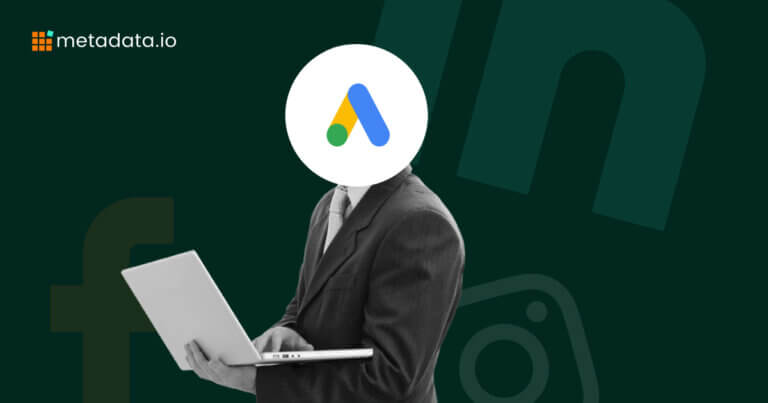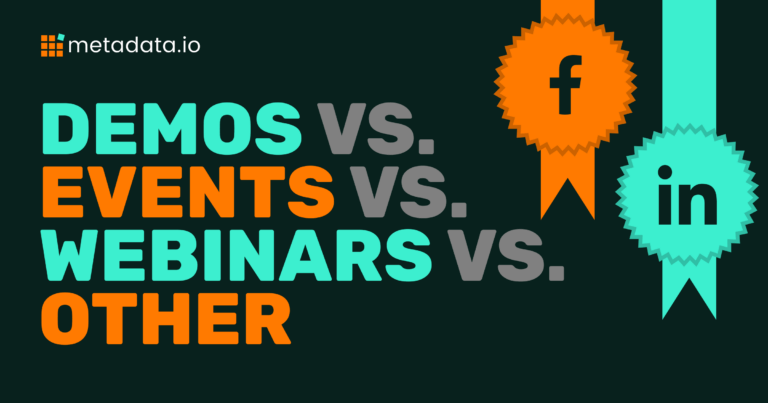How To Launch Software Products Part II
If you’re reading this, it’s because you’ve done it: You’ve knocked out part 1 of How to Launch Software Products, and are ready to actually, well, launch software products.
But in order to get into CLUB PRODUCT LAUNCH, this product marketing bouncer requires that you present government-issued identification of these three measurable outcomes:
- An engaged audience: They’ve been interacting with the foundational knowledge assets you’ve produced by opening your emails, answering your surveys, clicking your ads, and downloading your content.
- A smart audience: They’ve read, shared, and commented on the foundational knowledge content you’ve been producing across all mediums.
- A hungry audience: They’ve been identifying challenges they didn’t previously know they had from the content you’ve shared, and are starting to swarm the hive for new solutions by showing higher intent scores and interacting with your sales team.
Proper ID admits you one entry into CLUB LAUNCH.

But now that you’re in, there’s one housekeeping pro tip I want to share with you before we really get this party started: CUT THE GUESTLIST NOW.
Unless you’re working with an unlimited budget and timeline (in which case, btw, I hate you), NOW is the time to parse down that account list.
By running a few high-level reports, you should be able to pull out key engagement trends from stage 1 (foundational knowledge).
- Which accounts aren’t engaged?
- Are there certain verticals, or spaces, or regions who didn’t take the foundational knowledge bait?
- Are there any other trends you’ve noticed that probably won’t yield the ROI you’re looking for from this campaign?
Scrub those accounts from your target lists NOW, and don’t look back. Because either they DGAF or they ain’t ready.
Either way, keeping those accounts around for stage 2 is only going to get you a pair of bad, bad things:
Mad unsubscribed
Before this campaign, they were probably neutral with your brand.
You keep hittin ‘em with stuff they don’t want? You’re gonna end up with a fat list of permanent suppressions.
And you don’t want to be on the hook for a whole bunch of people who have new beef with your brand.
Compromised KPIs
If they didn’t click before, what makes you think they’re going to click now?
The whole point of stage 1 was to level up and even out the knowledge base of your audience.
If they aren’t meeting you at the starting line for this launch, at this point they’ll never catch up, and your ad spend and email sends are going to reflect much lower open, click, and conversion rates as a result.
But let’s not drag this out any further: in the words of the great Product Marketing legend Hannah Horvath, it’s launch day baby, and I’m ALIVE.

Now that we’ve prepared our audience for what’s to come, it’s time to present all the new information you’ve probably just been jumping right into from the start with your previous launches (that’s not a jab, btw, because same).
In this stage, we’re answering the BIG questions, including:
- What new product, feature, update, or solution does your company now offer that wasn’t available before?
- What about it is better? What about it is limiting?
- What about it is like other solutions? What sets it completely apart from the rest?
- What challenges does it solve? What about this will make your buyer better at their job?
- What technology does it integrate with?
This is the stage in which we product marketers thrive because it’s time to do what we do best: storytelling.

But storytellers be warned: throw all those answers at them at once, and I don’t care how sick this launch is, your own launch will cannibalize itself.
Your audience can only take so much new information before experiencing total launch fatigue.
If Damon Lindelof and Carlton Cuse tried to answer the crash, the 4-toed statue, and the man in black all in under 45 minutes, we’d have all walked away thinking they were in purgatory the whole time, and nothing else we studied, rewatched, zoomed in on or researched for the past 7 years of our lives even mattered.
…OR DID IT. Maybe that was a bad example.
But regardless of where you found yourself emotionally on the evening of May 23rd, 2010 (#livetogetherdiealone), how you tell your product launch story should be a slow, steady, building stream of new information that unfolds over time — like a beautifully executed novel.
We’ve already introduced context and key players (in stage 1: foundational knowledge); now it’s time to develop those characters, call out their challenges, and slow-burn their arcs. We’ll do that by breaking the launch stage into 3 key phases:
- ANNOUNCE
- EXPAND
- EXPERIENCE
The Announcement phase
I’m not going to sugarcoat it, folks: YOU CAN’T MESS THIS ONE UP.
Product Marketers wear a helluva lot of hats, and we are responsible to make sure a boatload of stuff goes right throughout the planning and execution of an entire launch campaign, but nothing is more critical than the execution of your core product launch announcement.
If you lose sleep at all, this is the night to do it. And if you pick one day out of the year to NOT BE ON VACATION, this would be the day.
Because if we’re sitting down for a product launch dinner, this is the steak. It needs to come out perfectly hot, medium rare, delicately marbled, and lightly seasoned. No distractions, just meat.
(steak break)
I don’t doubt you for one second that this product launch is nuanced, layered, and solves myriad challenges for myriad personas. I know it does because as product marketers it’s our job to make sure of it.
But do not make the mistake of trying to tell that story all at once.
“You can’t be everything to everybody at the same time.” – Dr. Alice Nixon, My Therapist
Narrow your focus on your biggest, juiciest value: If you had to choose to fill in the blanks below with just ONE WORD, what would those words be?
Today we are announcing the launch of (core product/feature/update). This (product/feature/update) helps (core persona it impacts) do (core challenge it solves) better.
NO “AND”s ALLOWED. YOU HATE ME. I know.
Your messaging house clearly articulates 3-5 personas this product impacts, and 3-5 corresponding challenges it solves, and 3-5 really incredible outcomes those personas with those challenges can expect.
But today, I wanna talk about THE BIG STUFF.
The sides are coming. The dessert is on the way. Today, let them bite into that steak and focus on the core quality of what they’re about to enjoy. And if you do this phase right, it’ll make them want even MORE.
Here are a few ways to up the effectiveness of your core product announcement:
Simplify your message
Drop the truffle butter. Drop the au ju. And for the love of all that is holy and good in this world, drop the buzzwords.
You’ve got to NAIL this messaging, and get right to telling your audience, in as few words as possible, what the hell you are launching.
If you’ve got a copywriter in-house or at your disposal, this is the time to hop on a call and go through this announcement frame-by-frame.
Pro tip: Read your announcement email and time it.
Make sure you get to the point in under 8 seconds, and that all your core messaging and designs are both complementary and mobile-friendly.
Nobody’s giving you the benefit of the scroll doubt on a marketing email, that’s a promise.
Diversify how you promote it
Repeat after me: “Just because I like to consume content on a certain platform, doesn’t mean everybody likes to consume content on that platform.”
It’s incredibly important to make sure you splash your singular, big, amazing announcement EVERYWHERE.
Don’t just think LinkedIn. Think Twitter, Facebook, Pinterest, ClubHouse, TikTok — wherever your buyers are, you should be for this one.
Pro tip: Go way beyond organic social.
How about paid social, banner ads, email, direct mail (remember that?), SMS, billboards, tv commercials, streaming ads, messenger — Once you simplify your message, you want to get it in front of as many eyes, as many times as possible.
Repetition breeds awareness, and awareness sparks engagement.
You may be bored as hell with this announcement by now. But I promise your audience is not.
Make your CTA as clear as possible
Awareness sparks engagement — but only when you make it crystal clear how and why your audience should engage.
What’s the ask here?
Don’t you dare come to the table with a sick tag followed by an unclear CTA. Not only will your copywriter hate you, so will your audience — because ultimately, you got them hyped for zero payoff. It’s a lose-lose.
So whatever you do, once you’ve got that beautifully simple announcement copy, and a massively diverse channel launch plan, decide what the hell you’re asking them to do.
Pro tip: Make it easy for them, not you.
If you’re trying to capture demand for this announcement, sure, a form fill might have to be your best bet to collect that critical contact info.
But don’t you dare send that same form via email — you emailed them. You already have all the contact info you’re trying to collect via that form. And your recipients will resent the hell out of you for asking for it again.
Take them straight to the purchase, to book a meeting, to your product — whatever it is, don’t make your audience do extra work so you don’t have to.
Every channel requires a different CTA because every channel starts with different information about your audience. Think through this customer experience map and be deliberate with each CTA.
The Expansion phase
Alright, my product marketing babies.
I know that was tough to narrow down your message to one core benefit for one core group, but now it’s time to get saucy: because HERE COME THE SIDES.
When I told you to make them want more, this is where the more comes in.
And any well-coursed meal doesn’t just throw any old food next to that steak — NO. These sides are perfectly paired to balance out and bring forward the natural flavor of the main course.
In this phase, we’re going to get into the ancillary benefits this core product launch also offers. Now’s the time to address the additional personas, challenges, and solutions I made you hold off on in phase 1.
Here are a couple of tips for introducing all the extras to your audience:
Create channel consistency
No need to reinvent the wheel here: stick to the same channel strategy playbook you created for your core product launch.
Buyers like consistency, and seeing what they expect come to fruition. Your buyers frequent the same few channels and expect to engage with your marketing on those same few channels, consistently.
So if part of your core launch was banner ads, think retargeting. If part of your strategy was email, think trigger campaigns based on previous opens and clicks. Or if you relied heavily on digital events and webinars, think bite-size videos on social.
If the place I usually engage with your company is in my inbox, and I don’t get an email about a product launch, I’m probably not even going to know it happened.
And even if I happen across your message somewhere else, at best I’ll assume it wasn’t too important because I didn’t hear about it in “the usual” place.
Mix up your messaging
If your core product announcement was one full week of the same tag and message across all assets and channels, now’s the time to unveil your secondary and tertiary messaging to hammer home the breadth of this solution. Use every day of this week to introduce a new benefit.
Remember the ‘Got Milk?’ campaign from the 90s? (Gen Z has left the chat).
I expected to see those magazine ads, full-bleed, in every magazine I subscribed to, with their core product tag, “got milk?” splashed across the page.
I knew all that was coming, and it felt like I was, somehow, IN on the whole thing.
That channel consistency bred brand loyalty. But the variable that this then-middle-schooler was foaming at the mouth for each month was who was going to be the next celebrity donning that iconic milk mustache, and what was their milk story that came along with it?
By piggybacking the variability of their additional messaging on top of the consistency of their core tag and channel strategy, Milk was able to capture my attention through loyalty, while simultaneously expanding upon their core product message in bite-size chunks with a new celebrity milk message.

The Experience phase
But alas, the time has come in this campaign that every good Jerry Maguire fan waits for.
This is the part where you stop educating people about your product, you stop hyping your product, you stop writing memos mission statements about your product, and you get to the damn point.

Because at some point, no matter how engaging and air-tight your copy and promotional strategy is, your audience will expect to see how this thing works.
If your educational content was effective, your buyers were ready to hear about your new product. If your product launch was effective, they are now ready and wanting to see the damn thing.
But if you don’t have a plan for layering a seamless, gorgeous, meet-them-where-they-already-are user experience waiting on the other end of that form fill, not only will your promotional strategy be for naught, you’ll lose credibility with your most captive audience — and your sales org — in one fell swoop.
And if you’re anything like me, you care way too much about what people think about you to handle that level of widespread disappointment. So to avoid being public product marketing enemy #1, be sure in this stage you are able to answer:
- Does this product integrate?
- How do buyers use this product?
- What resources do they need to support the implementation and use of this product?
- What is the experience like using this product?
By the end of this stage, you’ll want your buyers to not only feel like they understand and want your product but that they’re equipped to implement it, too.
So let’s build a plan for delivering a product experience your buyers — and your sales org — can sink their teeth into:
No live demos
By this stage, your sales team has no doubt a lot of qualified leads in their pipe asking for a demo.
YOU DID IT! You won! Except for two problems:
- We sell technology
- Technology has a funny way of not working only when it’s absolutely critical it actually does
And a friendly reminder:
It’s #productlaunchszn and there’s a good chance (unless you built out a long beta with internal user testing and training) that most of your sales org hasn’t had enough time to really get comfy using this product in a high-pressure situation yet.
Enable your Sales team
Want to knock this thing out of the park?
It’s going to require money and time, but the higher quality these enablement assets are the more effective and experiential they’ll be.
Create your team some high-fidelity technical assets including:
- Pre-recorded videos, featuring several use-case-based “day in the life of” walk-throughs for sales to share with their buyers
- A “safe” demo instance, jam-packed with prefilled dummy data, prebuilt workflows, and safe-guarded from big edits or foundational changes
- A free trial for buyers to use on their own! As long as sales has provided them with the tools they need to try to use this thing, let them drive for a bit, and check-in after a week
On a budget and time crunch? These assets will get the job done, too:
- Technical documentation that breaks down every, single, granular, detail with corresponding images
- Infographics that articulate the workflows based on each use case
- Hi-fi screenshots of the product — from setup to implementation to (if applicable) end-user experience
- GIFs! Use a tool like CloudApp to bring that documentation to life by turning those screenshots into little mini-movies
Integrate as a part of launch
You have one chance to get a product launch RIGHT.
There will be no time (unless something goes horribly wrong, Elizabeth Holmes), that this large of an audience will be talking about and looking into buying your product all at once. Take this opportunity to make it easier than ever: integrate it!
Remember that whole, ‘you can’t be everything to everybody all the time’ advice from Alice?
Remember and focus on what you ARE good at: your core solutions. And seek help at what you AREN’T as good at: operationalizing your core solutions.
Not only will integrating your core product with your buyers’ existing tech stacks make it that much easier for them to consider buying from an implementation side, it’ll lend incredible credibility and trust to your brand and product.
So don’t be shy, ride those integration partner coattails and make implementing, accessing, and getting the most value out of your product as enjoyable and seamless as possible, right from the start.
And that, my friends, is how you launch a product.
“But wait,” said the product marketer.
“That’s it!? Where’s the thought leadership? Where’s the assessment? You started this whole series off talking about being a teacher — and when I was in school we didn’t just stop the metamorphosis unit after we saw that butterfly sneak out of the cocoon. There were tests! There were projects! I demand a recount!”
Ah yes, young grasshoppers, nothing gets past you.
Rest assured, there will be more to come in the final part of this series, where we’ll tackle how to flawlessly and comprehensively drive maximum adoption (arguably our most critical KPI) through tools and content that will turn your buyers not just into adopters, but super users (and connectors) of your business for years to come.
Meet Aubyn Casady
Principal Product Marketing Manager, G2
Aubyn Casady runs partner marketing in her role as Principal Product Marketing Manager for G2. She has spent her marketing career launching campaigns, products, and partnerships for some of Chicago’s top SaaS companies while moonlighting as a freelance content writer and product marketing consultant.
Outside of her full-and-a-half-time marketing responsibilities, Aubyn manages and sings every weekend with Chicago’s premium event band, Rush Street Rhythm.
Connect with Aubyn on LinkedIn here.



